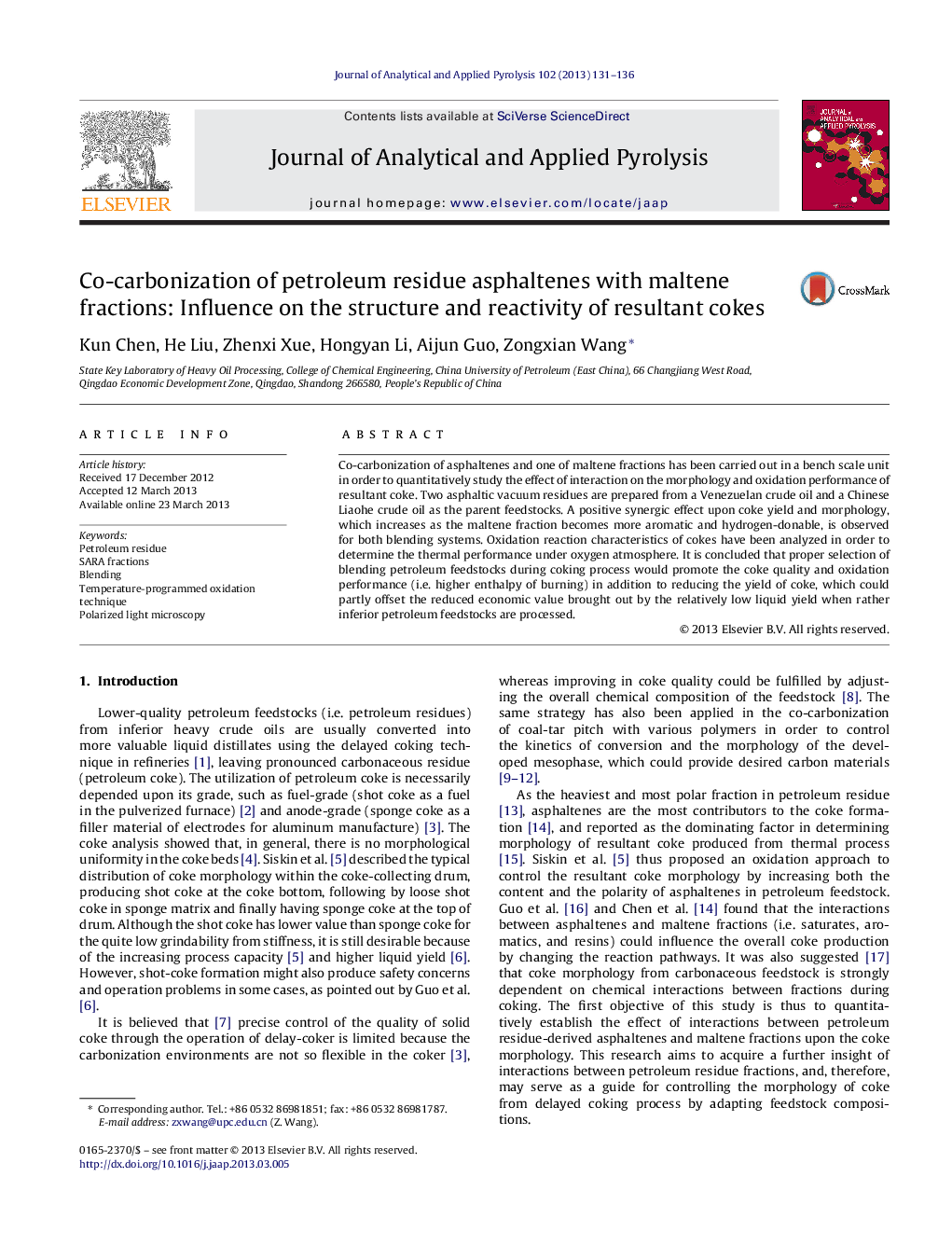| Article ID | Journal | Published Year | Pages | File Type |
|---|---|---|---|---|
| 1196897 | Journal of Analytical and Applied Pyrolysis | 2013 | 6 Pages |
•The interaction upon the morphology and reactivity of coke has been studied.•The composition change of feeds has apparent influence upon the morphology.•Improving in coke quality could be fulfilled by proper selection of blending feeds.
Co-carbonization of asphaltenes and one of maltene fractions has been carried out in a bench scale unit in order to quantitatively study the effect of interaction on the morphology and oxidation performance of resultant coke. Two asphaltic vacuum residues are prepared from a Venezuelan crude oil and a Chinese Liaohe crude oil as the parent feedstocks. A positive synergic effect upon coke yield and morphology, which increases as the maltene fraction becomes more aromatic and hydrogen-donable, is observed for both blending systems. Oxidation reaction characteristics of cokes have been analyzed in order to determine the thermal performance under oxygen atmosphere. It is concluded that proper selection of blending petroleum feedstocks during coking process would promote the coke quality and oxidation performance (i.e. higher enthalpy of burning) in addition to reducing the yield of coke, which could partly offset the reduced economic value brought out by the relatively low liquid yield when rather inferior petroleum feedstocks are processed.
